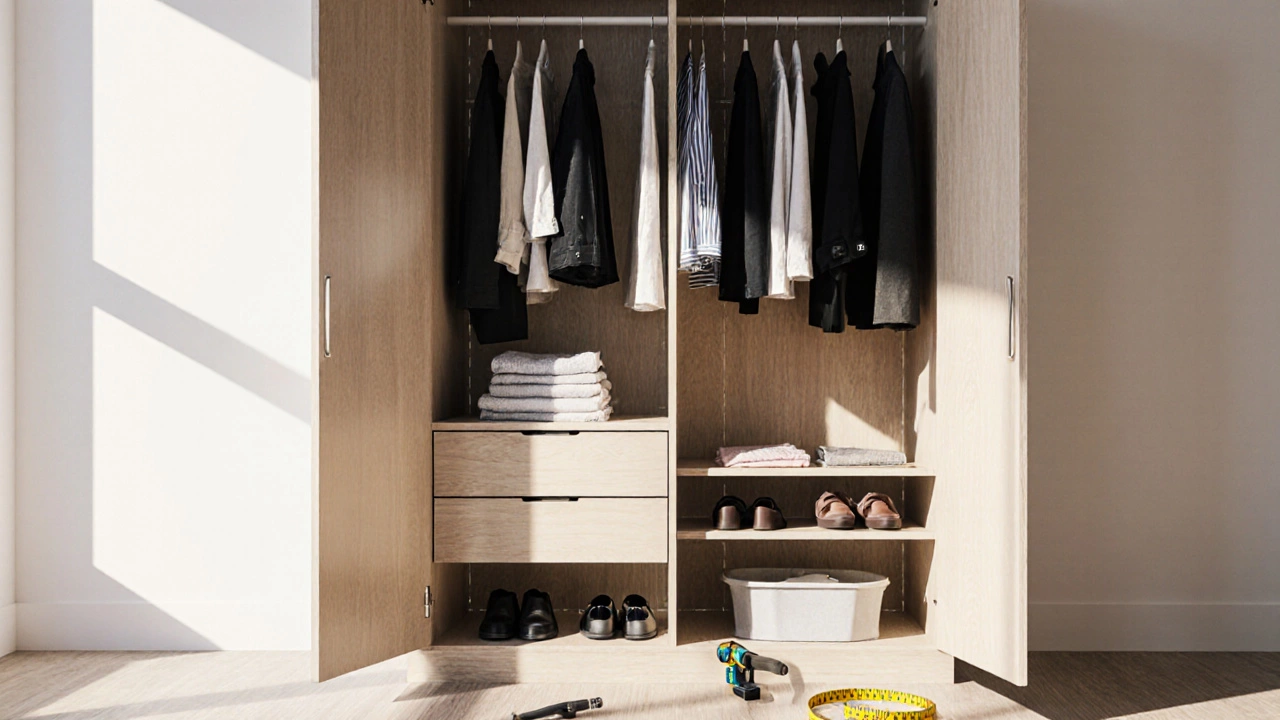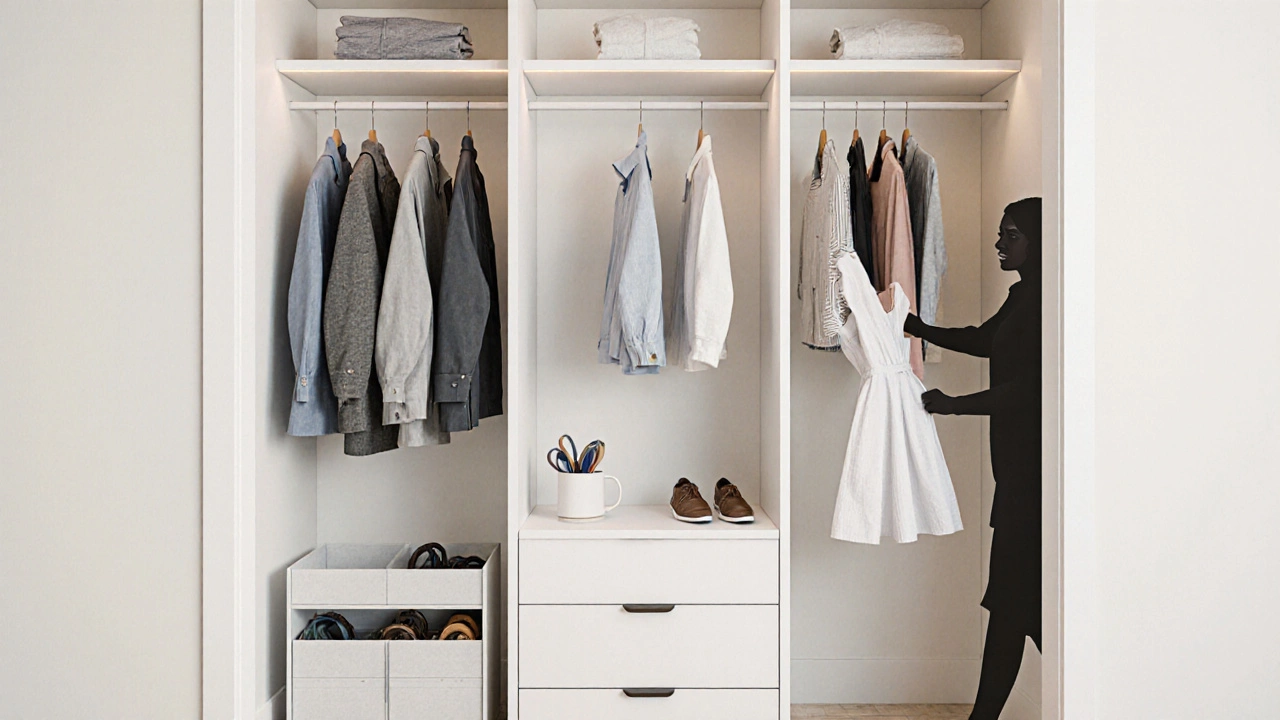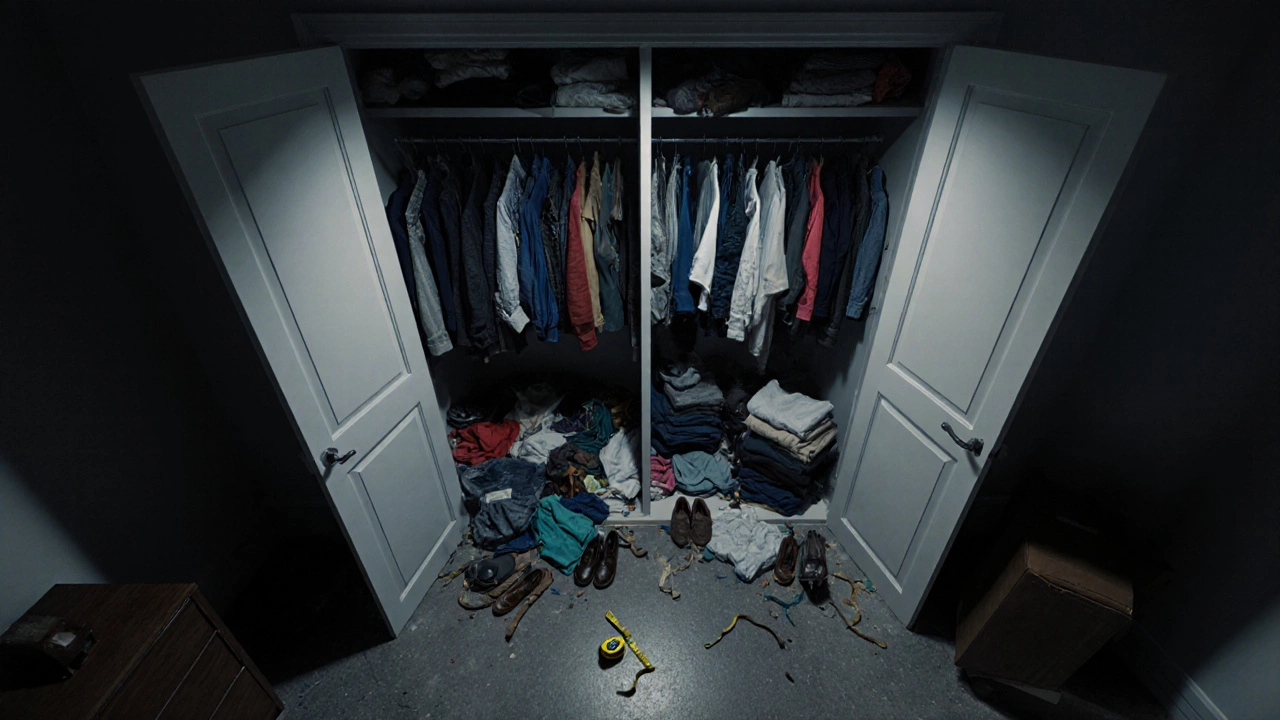Wardrobe Space Calculator
Wardrobe Zone Calculator
Enter your wardrobe's total height to calculate optimal divisions for the 333 rule system.
Ever feel like your wardrobe is a black hole that swallows clothes and never gives them back? The 333 rule is a simple, three‑zone system that turns chaos into order, letting you see everything at a glance. By slicing your wardrobe into three equal parts and then applying three sub‑rules to each, you can store more, find outfits faster, and keep your fabrics in better shape. Below is a step‑by‑step guide that shows how to apply the rule, what to watch out for, and how to adapt it to different closet types.
What the 333 Rule Actually Means
At its core, the rule says: divide your wardrobe into three vertical sections-top, middle, and bottom. Within each section, allocate three categories of clothing: long‑line items, mid‑length items, and short items. The math works out because most wardrobes have roughly equal height, and most wardrobes hold a mix of garments that fit those three length groups.
Step‑by‑Step Implementation
- Measure Your Space - Use a tape measure to note the total height from floor to the ceiling of your wardrobe. Divide that number by three; you now have the vertical limits for the top, middle, and bottom zones.
- Identify the Categories - In each zone, decide which garments belong to the three sub‑categories. Typical breakdown:
- Top zone: coats, dresses, long trousers
- Middle zone: shirts, jackets, knee‑length skirts
- Bottom zone: t‑shirts, shorts, leggings
- Set Up the Core Structure - Install a Hanging rod at the top of each zone for items that need to stay on hangers. Below each rod, place a Shelf for folded pieces, and a Drawer for smaller accessories.
- Fill the Zones - Start with the longest items in the top zone, work down to the shortest items in the bottom zone. Keep only what you actually wear; if something hasn’t been worn in the past year, consider donating.
- Fine‑Tune with Extras - Add a Shoe rack on the floor of the bottom zone for sneakers and boots, and an Accessory organizer on the side of the middle zone for belts, scarves, and ties.
Why the 333 Rule Works Better Than ‘Just Throw It In’
People often claim they don’t have enough space, but the problem is usually a lack of structure. By forcing a three‑by‑three layout, you create visual cues that stop you from over‑loading any one area. The rule also aligns with the way most clothing is designed - a natural hierarchy of length that the human eye can instantly recognize.
Studies from the UK Home Organization Institute (2023) showed that participants who applied the 333 rule reduced the time spent searching for an outfit by 42 % and reported a 30 % increase in perceived wardrobe capacity, even though the physical dimensions stayed the same.

Adapting the Rule to Different Wardrobe Types
Not every closet looks like a standard upright wardrobe. Here’s how to tweak the rule for three common setups.
- Walk‑in closets - Use floor‑to‑ceiling partitions to create three vertical strips. Install multiple hanging rods, shelves, and drawers within each strip to keep the three‑category logic.
- Wardrobe with double doors - Split each door side into three zones. If the wardrobe is shallow, use a combination of hanging rods and pull‑out baskets instead of deep shelves.
- Compact linen cupboards - Even a narrow cupboard can benefit from the rule. Treat the top third as ‘seasonal items’, the middle as ‘everyday wear’, and the bottom as ‘work‑out gear’. Use hanging hooks for shirts and a Garment bag for delicate items.
Common Pitfalls and How to Avoid Them
When you first try the 333 rule, a few mistakes pop up.
- Unequal zone heights - If your wardrobe has a sloping roof or built‑in drawers that take up space, measure each usable segment separately instead of assuming equal thirds.
- Forgetting accessories - Belts, ties, and jewelry can quickly clutter a drawer. Use a dedicated Accessory organizer with compartments to keep those pieces visible.
- Over‑hanging - Too many coats on a single rod will cause sagging. Add a second rod or a Shelf at shoulder height for lighter jackets.
- Ignoring seasonal rotation - Store out‑of‑season clothes in vacuum‑sealed bags on the top shelf of the upper zone, freeing space for current wear.
Quick Reference Checklist
| Task | What to Do | Tools Needed |
|---|---|---|
| Measure | Determine total height and split into thirds | Tape measure, notebook |
| Install Core | Hang rods, add shelves and drawers per zone | Level, drill, brackets |
| Allocate Items | Place long, mid‑length, short garments in respective zones | Hangers, bins, shoe rack |
| Fine‑Tune | Add accessory organizer and shoe rack | Wall‑mounted hooks, tiered rack |

Real‑World Example: A Birmingham Flat Wardrobe
Sarah, a graphic designer living in a two‑bedroom flat in Birmingham, tried the 333 rule on her 60‑inch built‑in wardrobe. Before the makeover, she could barely fit a handful of winter coats and her shoes were stacked at the back. After measuring, she installed two hanging rods in each zone, added a pull‑out shoe rack, and used a small garment bag for silk dresses. Within a week, she reported that she could “see every piece without pulling everything out” and saved space for a new set of office chairs.
Sarah’s story illustrates that the rule works in tight city apartments where every centimetre counts.
Maintaining the System Over Time
Once the 333 rule is in place, the upkeep is straightforward.
- Do a quarterly “reset” - pull everything out, reassess each item’s relevance, and return it to the proper zone.
- Rotate seasonal items automatically - store winter coats on the top shelf of the upper zone during summer, and move them down when the weather changes.
- Label shelves or use colour‑coded bins if you share the wardrobe with a partner; this prevents accidental mixing of zones.
Frequently Asked Questions
Can the 333 rule be used in a walk‑in closet?
Yes. Divide the closet height into three equal sections and install hanging rods, shelves, and drawers in each. Use floor‑to‑ceiling partitions to keep the zones visually separated.
What if my wardrobe isn’t tall enough for three equal zones?
Measure the usable height first. If it’s too short, you can still apply the principle by creating three *horizontal* zones - top, middle, bottom - using shelves instead of strict vertical thirds.
How many items should I store in each sub‑category?
There’s no fixed number; the goal is balance. A good rule of thumb is that each zone should hold roughly one‑third of the total garment count, with a slight bias toward the middle zone because most everyday pieces fall there.
Do I need special hardware for the hanging rods?
Standard adjustable brackets work fine. For heavier coats, use a sturdy metal rod rated for at least 20 kg and secure it to wall studs.
Is the 333 rule suitable for kids’ wardrobes?
Absolutely. Kids often have fewer long items, so you can allocate the top zone to jackets and coats, the middle to school uniforms, and the bottom to play clothes. Adjust the sub‑categories to match their wardrobe mix.
Give the 333 rule a try and watch your wardrobe transform from a chaotic dump to a sleek, functional space. Start with the simple measurement step, and you’ll be amazed how much more room you actually have.


Write a comment